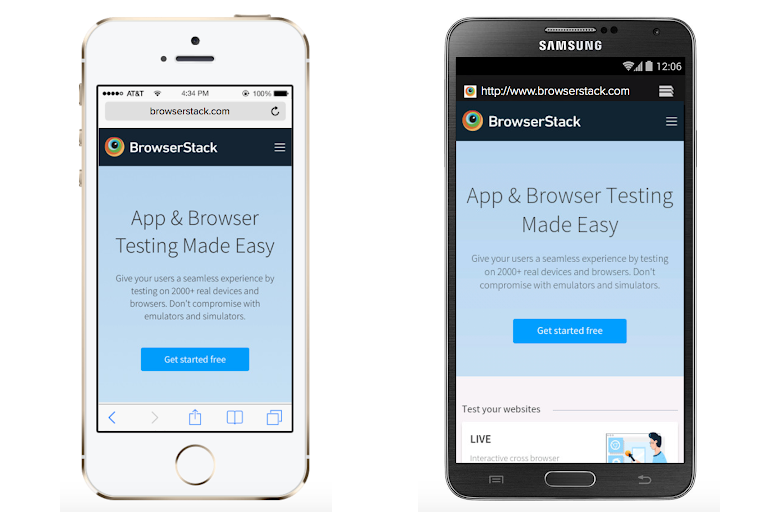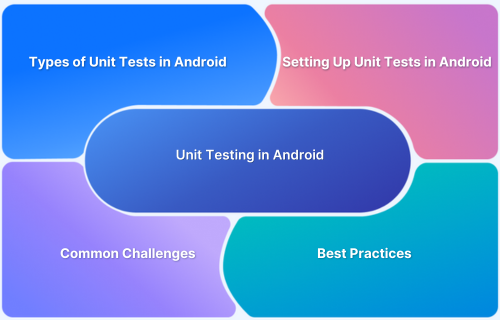Different Types of Testing to Deliver a Bug-Free User Experience
By Akshay Badkar, Community Contributor and Pradeep Krishnakumar, Manager - May 29, 2019
Have you ever come across a situation when an application or website can’t be opened on a particular browser and works like a breeze on another? We face this issue many times and wonder what was the problem. The answer is simple, the application or website wasn’t tested on all browsers, i.e. browser testing wasn’t done. If that were done, this bug would have been fixed before going live and the end user would have had a seamless experience.
One might think that cross browser testing is an extra step in the development phase as it is assumed that every user is on Google Chrome. Actually, only 70.95% are on Chrome and that varies based on user locations. But this is a huge misconception which ultimately leads to a buggy website or application. Just one bug can lead to your user bouncing off and thus tainting your company’s reputation and eventually revenue.
What Things Should be Considered Before Starting Browser Testing?
The idea of performing browser testing is pretty straight forward but the important part is to know where to start from. Here are some of the things you need to consider before starting browser testing:
- Have Realistic Expectations: It is known that all browsers are different and your application will behave differently on each of them. Developers need to acknowledge the fact that their applications will have a trade-off while operating on different browsers.
- Keep Mobile In Mind: Apart from the browser, the application will function differently on different devices as well. It is important to understand the importance of responsive design testing while developing an application or website.
- Maintain the Right Balance: The best method to test websites on different browsers is to maintain a healthy balance between manual and automation testing. While manual testing is important to assess an application, automation selenium testing will help in speeding up the test cycles.
- Make Smart Choices: Smart planning leads to a successful browser testing process. One of the considerations is to know which browsers to definitely test on. The list of browsers can be easily narrowed down by using Google Analytics and knowing which are the most popular browsers.
Types of Testing under Browser Testing
The different types of browser testing are as follows:
- Performance and Load Testing
Tools under this category is widely used for performance testing, especially load stress capacity and web application performance. These testing tools ensure that your applications or websites perform in peak traffic and under extreme stress conditions. - Page Speed Testing
The speed of a website or application can be critical for its success – both from a user and SEO perspective. Page speed testing help developers and testers to analyze various load times and optimize the website to ensure it loads faster on different browsers and networks. - Visual Regression Testing
Responsive layouts are the most difficult to test. Visual regression testing aid developers to make several visual comparisons between the development version of the website and the baseline version of the site. - Link Checking
Link checking allows you to keep track of all the links to your website or application. This helps understand the internal hierarchy of the website and the value of external links. - HTML Validators
This helps in validating HTML web elements for different formats or syntax errors, debug issues and fix them right away. - Web Accessibility Testing
Designing a website that will suit different user preferences, needs, and situations is key. Web accessibility testing help developers to enable easy access to the web, especially for people with disabilities. - Web Services Testing
Web services testing helps understand the functionality offered by the web service. It mainly involves determining the XML request and response format, sending the request and then validating the response with respect to the request sent. - Behavior-Driven Development Testing
Behavior-driven testing is focussed on testing the behavior of users compared to the technical functions of the software. According to the BDD methodology, an application is documented and designed around user experience, which helps to clearly define the user interactions. - Website Security and Vulnerability Testing
The security and vulnerability testing enable the capability to pinpoint the vulnerabilities by scanning web servers, workstations, web applications, networks, etc. on a regular basis. It also helps in classifying physical as well as virtual servers against security attacks. - Website Monitoring
Monitoring helps in analyzing and identifying your website’s strong and weak points. This will help in keeping an eye on your site’s performance, improve your site, and boost the conversion rate manifold.
Endnote
Browser testing is time-consuming but important. It is important that applications and websites are tested thoroughly before they are released to users, to ensure a great end-user experience. Tools like BrowserStack can help in accelerating the entire website testing process across a plethora of browsers, devices, and operating systems which will ensure a good experience to all the users. BrowserStack also seamlessly integrates with your CI/CD workflows like Jenkins, Travis CI, etc. and supports test suites written on Selenium, Appium.




